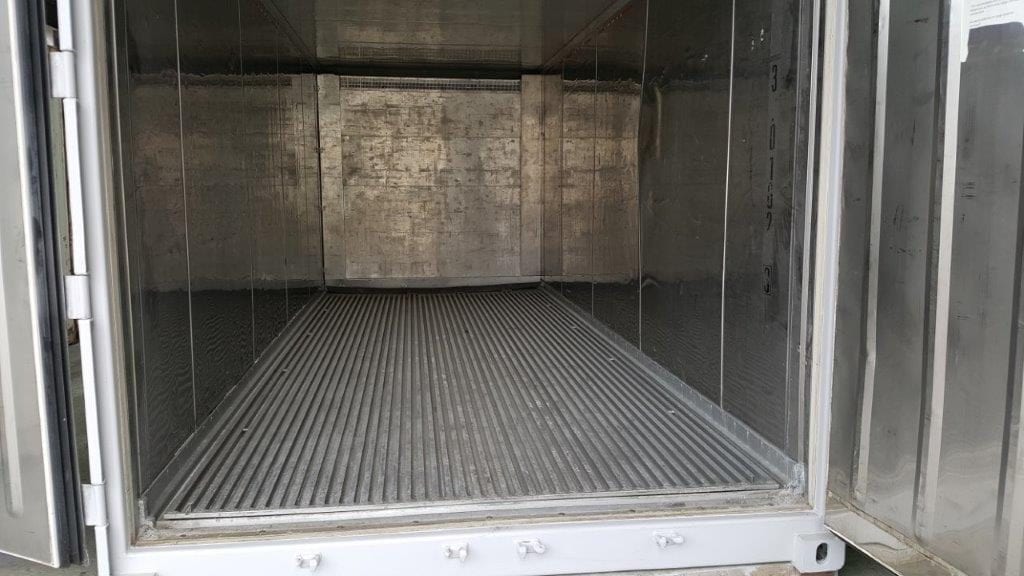Leasing a refrigerated container to store items at a controlled temperature is a smart investment for your business. To optimise the efficacy of your refrigerated container, Kiwi Box Refrigerated Container Hire recommend following three simple best practices to reduce the power bills related to running your container — avoiding unnecessary spend and maximising return on investment.
1. Turn off your refrigerated container while doors are open for extended periods
When you’re working inside your refrigerated container for extended periods of time, it’s important to turn off the refrigeration unit. Refrigeration units feature an evaporator, which removes moisture from the fresh air coming from outside the container, so it doesn’t enter the container and turn to ice.
If you leave the refrigeration unit running while the doors are open, the evaporator will struggle to deal with the high volume of moisture-laden air entering the container through the open doors.
As a result, the evaporator will ice up very quickly, and the unit’s ability to refrigerate the container will be lessened, meaning it has to run for longer to get the temperature down, increasing your power bill all the while.
2. Arrange items inside the refrigerated container to maximise air circulation
The way in which you arrange your stock inside the refrigerated container can have a huge impact on how long it takes to chill or freeze down the product to your desired temperature. The chilled air needs to be able to circulate freely around the product to lower the temp efficiently.
Kiwi Box refrigerated containers feature a false floor with grooves in it to encourage the air to travel along the floor, underneath the contents of the container. The air flows through the grooves in the floor before returning up the inside of the doors and across the top of the stock, back to the evaporator.
As such, it’s important to leave a gap between the items stored inside the container and the container doors. You’ll also want to leave a space of 100mm between the top of the goods and the container ceiling. These measures allow the cold air to flow freely around your stock, reducing the time and power taken to chill it, saving you both time and money.
If you are freezing down chilled product to -20°c, ensure you leave spaces around the sides of your product so the cold air can move around it. You’ll also want to consider the fact that goods packed in cardboard boxes take a lot longer to freeze due to the cardboard effectively insulating the goods from the chilled air supply.
3. Wash the refrigerated container condenser to help keep it cool
Another considerable, yet avoidable power suck can be created by a dirty refrigerated container condenser. The condenser is a finned radiator located just above the compressor and constructed of copper.
The condenser’s fins can become blocked with dirt and dust. This prevents it from releasing its heat, causes the whole refrigeration system to overheat and run at very high pressures, meaning the unit has to run a lot longer to bring the temperature inside the container down — ultimately driving your power bill and refrigerated container running costs up.
You can prevent this unnecessary and costly occurrence by regularly washing the condenser with a hose to remove any built-up contaminants.
Hiring the right refrigerated container for your needs
Choosing the right refrigerated container for your individual needs is very important if you want to freeze down your goods quickly and efficiently, saving power and money. Our crew here at Kiwi Box can talk through your particular requirements with you and provide valuable input to help you make the best investment for your business. Drop us a line anytime for an informal chat about your refrigerated container needs.


